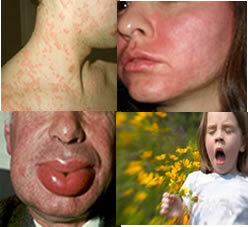COVID-19, the flu and cold there are three viral diseases, caused by different agents, that affect the respiratory system. Among the symptoms that can occur in these diseases, we can highlight the feverand the cough. The cold stands out because it presents itself in a milder way than the other two diseases. COVID-19 and flu can lead to complications and even death.
Read too: Differences between flu and cold
What is COVID-19, flu and cold?
COVID-19, flu and cold three diseases caused by virus that affect the respiratory system. These three diseases have different causative agents and also have some symptoms that allow them to be differentiated. See, below, a little more about each of them:
- COVID-19: is new disease which had its first registered case in China, at the end of 2019. This disease became a pandemic in 2020, being observed in various parts of the world and causing thousands of deaths. COVID-19 is caused by a virus of the family of coronavirus, O SARS-CoV-2. This virus is triggers symptoms such as fever, cough and breathing difficulty, although many people present the disease in a asymptomatic. It is more severe in older people and in people with health problems such as heart problems, high blood pressure and diabetes.

- The flu: is a disease caused by the virus Influenza. Three types of this virus circulate in our country: A, B and C. The Influenza virus type A is responsible for major pandemics, such as the pandemic in 2009, caused by subtype A (H1N1). Flu triggers symptoms such as fever, body pain and dry cough. It can lead to serious complications and even death, especially in so-called groups of risk, such as: the elderly, children under the age of five, people with chronic diseases, and pregnant women.
- Cold: is a disease caused by viruses, especially the rhinovirus and coronavirus. It is noteworthy, however, that coronaviruses are a family of viruses, and these, responsible for causing the cold, are different from the cause of COVID-19. A cold has flu-like symptoms, but milder. Among its typical symptoms, we have the cough, a runny nose and nasal congestion. Fever is not common in these cases, and when the patient has it, it is usually low.
Differences between COVID-19, flu and cold
COVID-19, flu and cold are three viral diseases that, despite affecting the respiratory system, differ from each other. Besides being triggered by different agents, as we saw in the previous topic, they present some symptoms that help us in this differentiation. However, it is important to point out that only a professional can confirm the diagnosis of a disease.
See too: Diseases caused by bacteria
Fever it is a common symptom with COVID-19 and flu, but rarely occurs with a cold. sneezing, in turn, are common in colds, but rarely occur in cases of COVID-19 and flu. THE shortness of breathe it is a symptom that sometimes occurs in COVID-19, but it is rarely seen in colds and flu. The Ministry of Health has created a table that helps us to better differentiate each of these diseases. Look:

Ways to prevent and control the spread of COVID-19, flu and cold

COVID-19, flu and cold are usually transmitted from one person to another through the secretions eliminated by the patient and by contaminated surfaces. Due to the similarity in the way of transmission of COVID-19, flu and cold, their way of prevention and control are similar. Thus, we have separated some tips for you to prevent these diseases and prevent them from spreading.
- Always wash your hands with soap and water, or sanitize your hands with 70% alcohol gel.
- Avoid touching your face without having your hands sanitized.
- Constantly cleaning surfaces that are frequently touched, such as doorknobs, computer keyboards, and cell phones.
- Avoid contact with sick people.
- Avoid agglomerations in outbreak situations.
- When coughing or sneezing, cover your mouth and nose using a handkerchief, which must be discarded immediately. If you do not have the handkerchief, use the inside of the elbow to cover the mouth and nose region.
- When you are sick, stay at home, avoiding contact with other people.
- In the case of the flu, the vaccine it is an important form of prevention.



